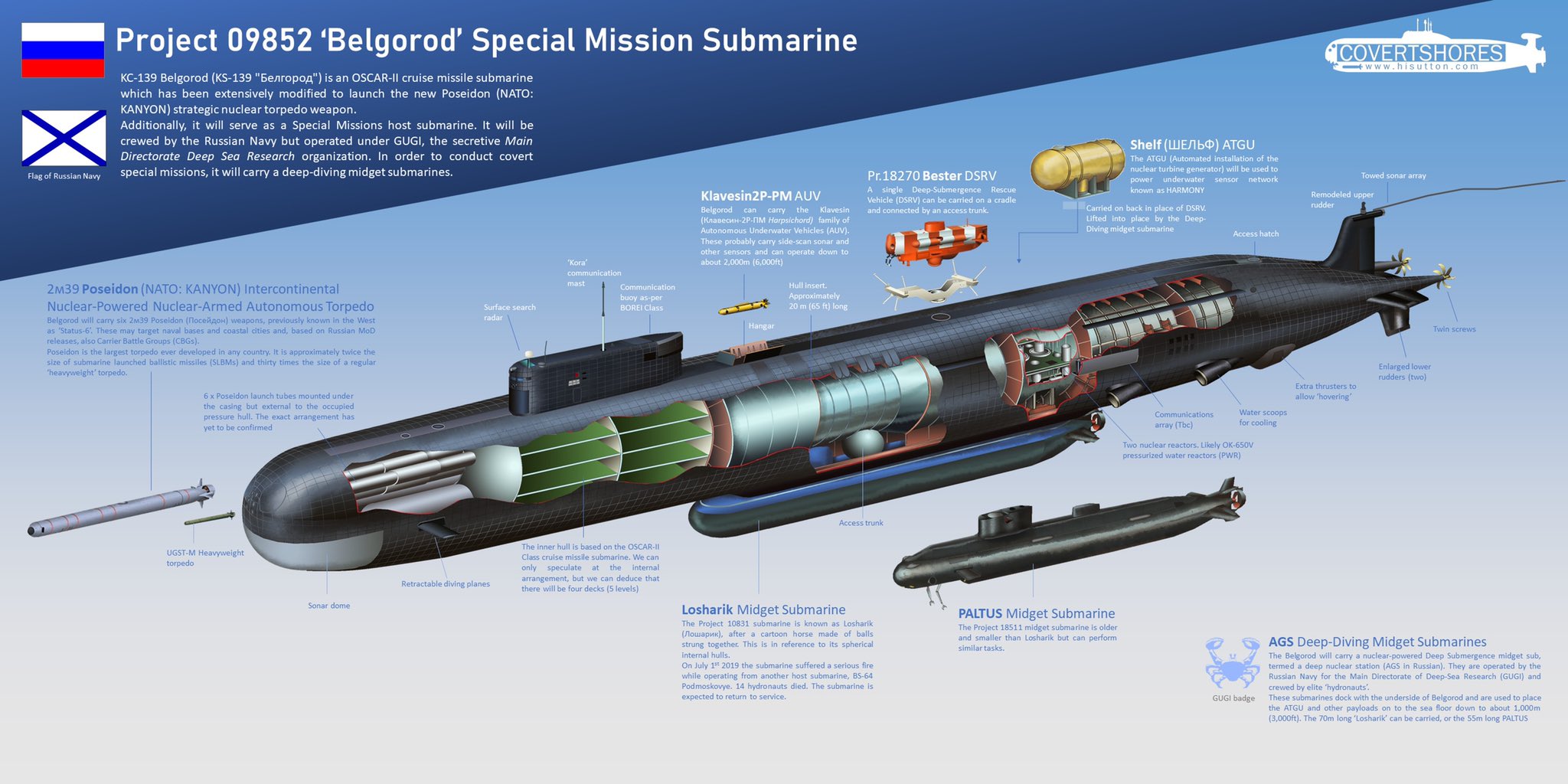
A Russian Navy submarine that carries bus-sized nuclear torpedoes was spotted in the Arctic after sparking headlines earlier this week over fears of a nuclear weapons test, according to new photos published on Wednesday.
Project 09852 Belgorod was spotted on the surface operating in the Barents Sea, on Sept. 22 and Sept. 27, near the Kola Peninsula, USNI News contributor H I Sutton reported Wednesday for Naval News.
On Monday, Italian newspaper La Republica reported that military officials in Europe had warned that the submarine had traveled to the Kara Sea to test its Poseidon torpedoes.
Pentagon officials did not provide any specific information on Belgorod’s movement when contacted by USNI News earlier this week. However, a defense official played down the submarine’s recent operations in general.

“I don’t have any information to provide on [Belgorod], a senior military official told reporters on Monday.
“I know it’s not a satisfying answer other than to say again, we have not changed our posture.”
The Poseidons, first revealed in 2015, are strategic nuclear weapons designed to circumvent the West’s growing ballistic missile defense capability.
The concept calls for the 80-foot nuclear torpedoes to be armed with up to a 100-megaton warhead that could be launched from thousands of miles away from a coastal target.
The explosion would “destroy important economic installations of the enemy in coastal areas and cause guaranteed devastating damage to the country’s territory by creating wide areas of radioactive contamination, rendering them unusable for military, economic or other activity for a long time,” according to a translation of a Russian presentation caught on camera by the BBC in 2015.
The boat, based on an Oscar-class guided-missile submarine design, formally entered the Russian Navy during a July ceremony, USNI News reported. Belgorod is part of Russia’s specialized submarine force, the Main Directorate of Deep Sea Research — known as the Russian acronym GUGI, (Glavnoye Upravleniye Glubokovodnykh Issledovaniy).

In addition to fielding up to six of the Poseidons, the 30,000-ton Belgorod serves as the mothership for smaller submersibles the Russians have used for deep-sea operations.
“The Belgorod submarine opens up new opportunities for Russia in conducting various research, allows conducting diverse scientific expeditions and rescue operations in the most remote areas of the world ocean,” according to a July statement from Russian Navy chief Adm. Nikolai Anatolyevich Yevmenov.
“The ship is designed to solve diverse scientific problems, conduct search and rescue operations, and can also be used as a carrier of rescue deep-sea and autonomous unmanned underwater vehicles.”





